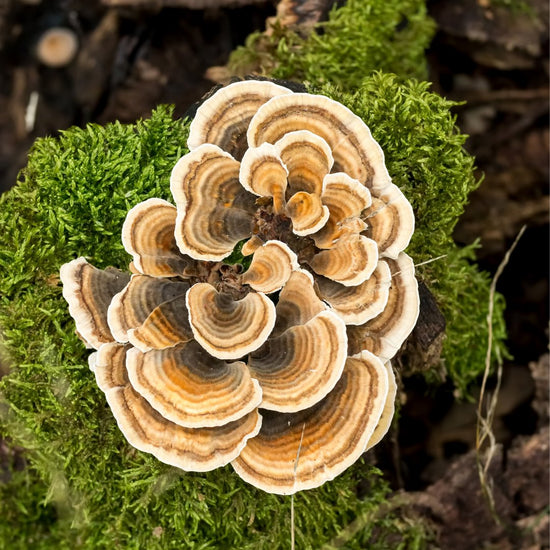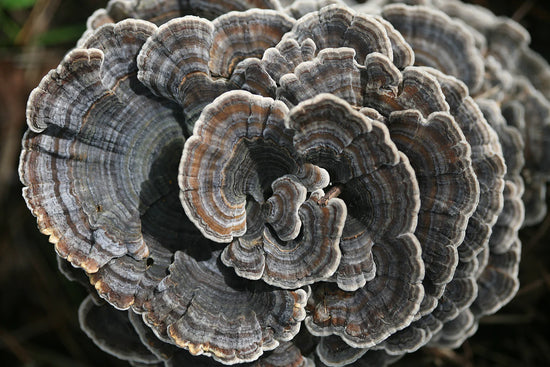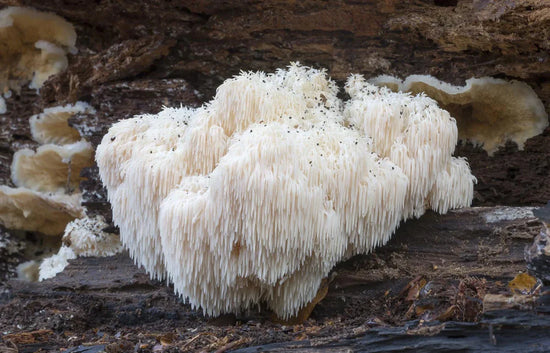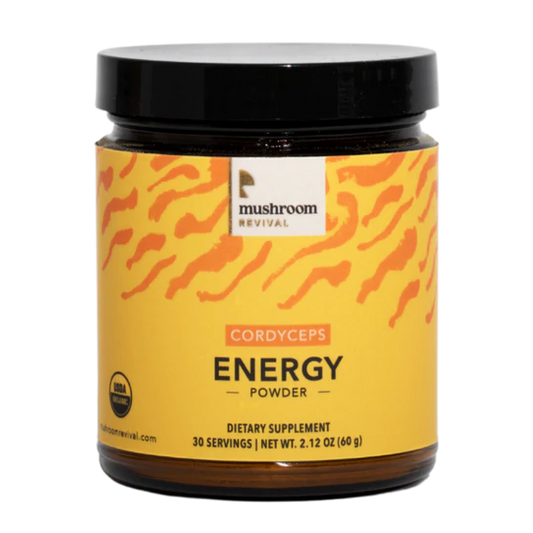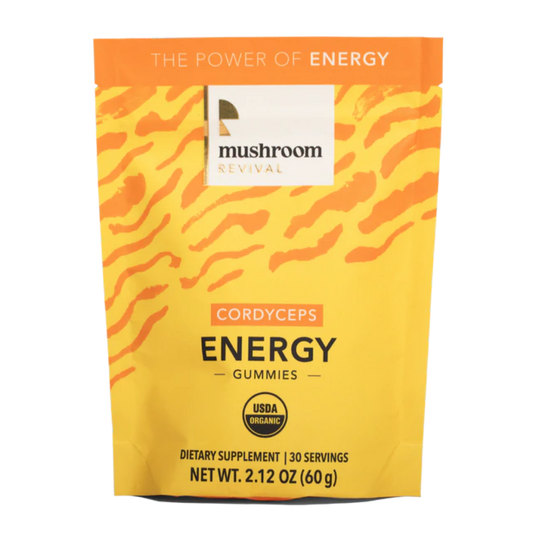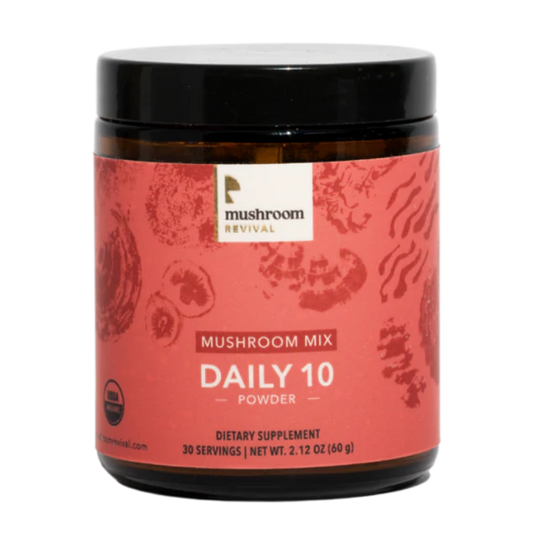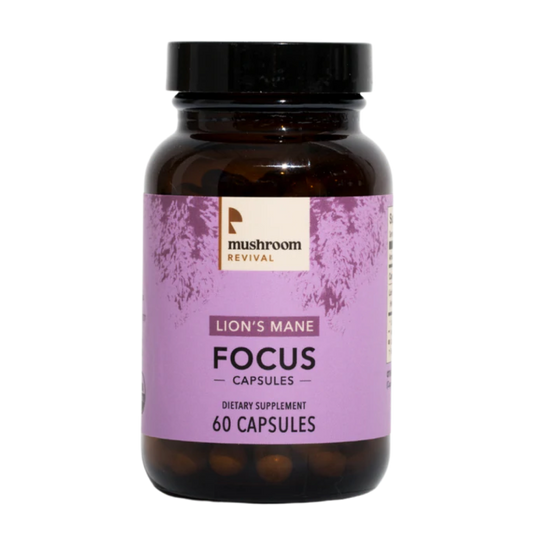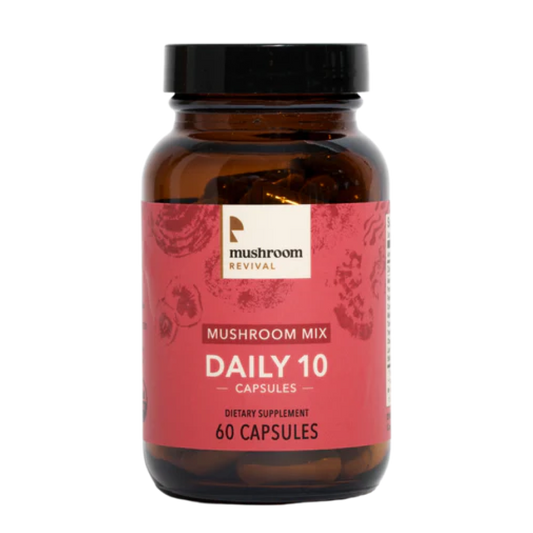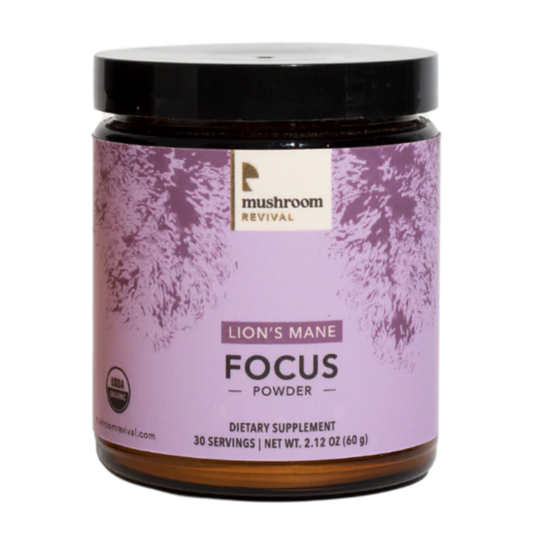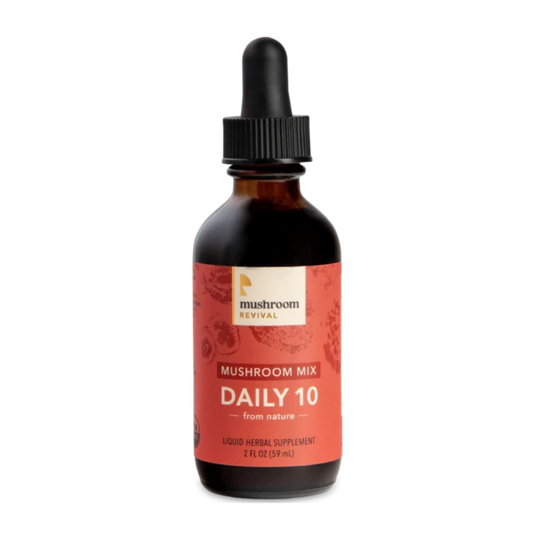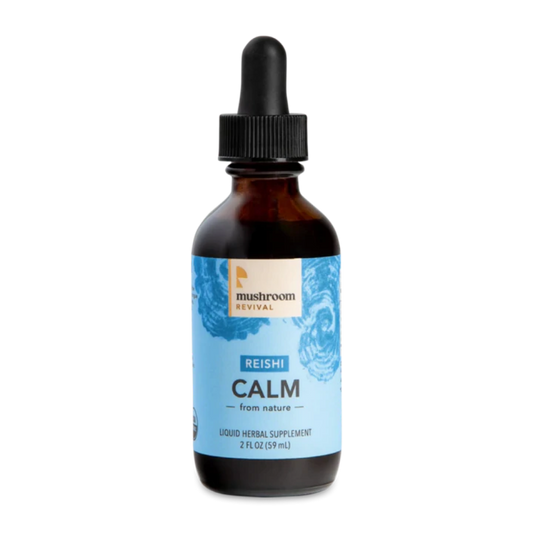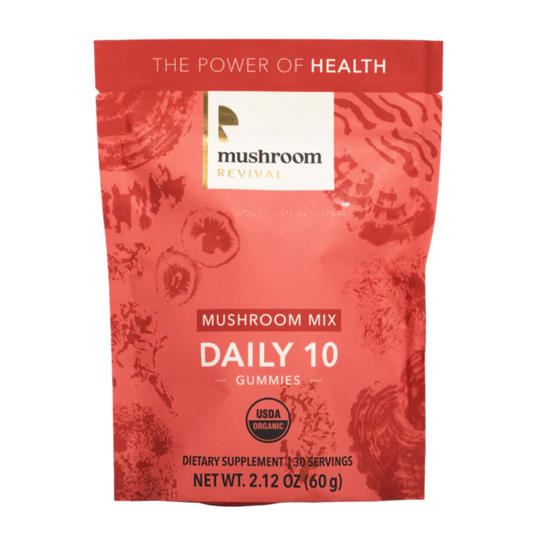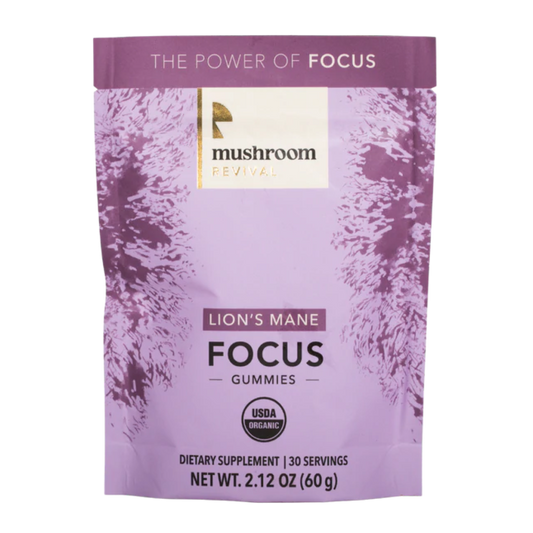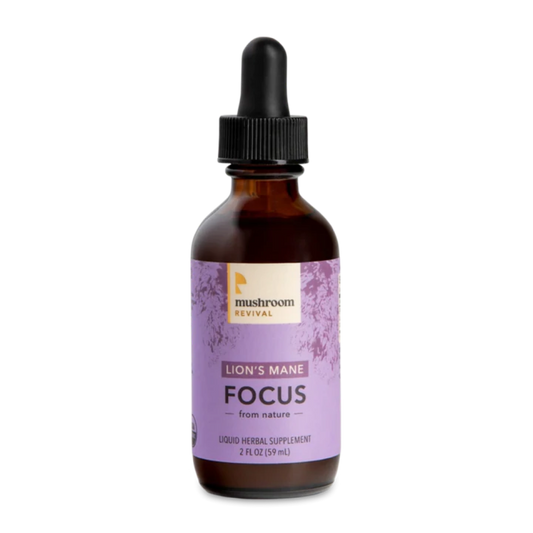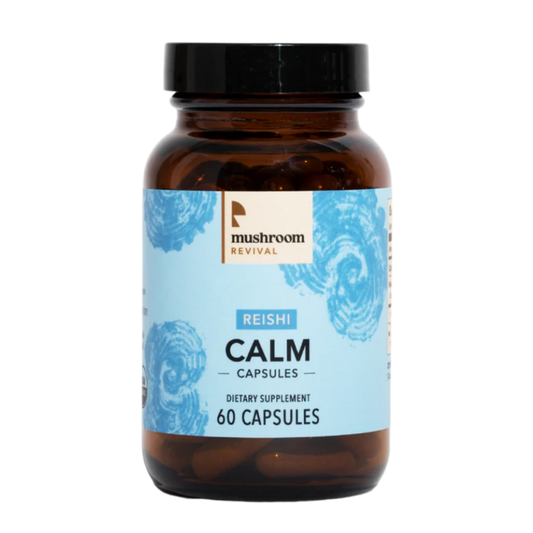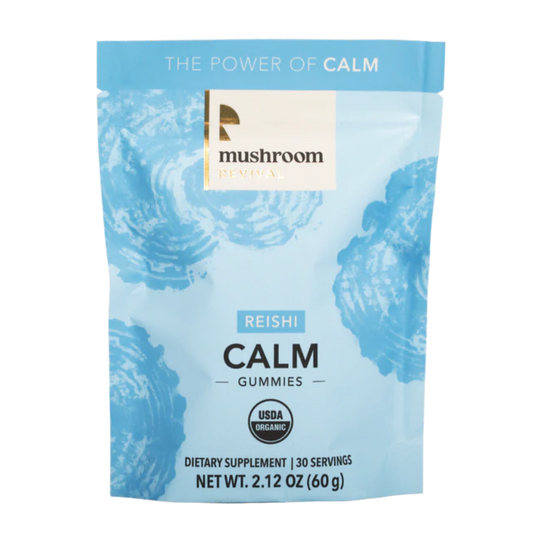Mo’orea’s hidden treasure trove of fungi with Matteo Garbelotto
Alisa Nappa

The remote volcanic French Polynesian Island Mo'orea, near Tahiti, happens to be a hidden treasure trove of unique fungi and mushrooms. Matteo Gabelotto and a team of researchers spent months trekking into tough virgin jungle and even hanging off sides of cliffs to obtain new species. They collected 553 species of fungi and sequenced 433 of them, all part of the Mo’orea Biocode Project.

TRANSCRIPT
0:11 Welcome, welcome to the mushroom revival podcast. How's everyone doing? If this is your first time tuning in, what's up, I'm your host, Alex Dora. And we are unbelievably passionate about the wild and wacky world of fungi and mushrooms we bring on guests and experts from all around the world to geek out with us and go down a mushroom rabbit hole. 0:37 If anyone doesn't know, we're accompanying mushroom revival functional mushroom company, you can check us out at mushroom revival.com. And without further ado, we're bringing on a super exciting guests Matteo to talk about mo Raya fungi. So how you doing? Hey, Hi, Alex, thanks for inviting me. This is really a cool show. 0:57 I love it. Thanks for being here. And you're saying where are you tuning in from again? Yeah, I'm on sabbatical for this year. And I work at the University of Torino on a project. But when I'm not working, like during the weekends, and I am in, in Tirol at the border between Italy and Austria, on the Italian side. So I'm calling you from the middle of the Alps, and lots of mushrooms actually, around here as well. 1:26 Well, I'm jealous of you being there, then also traveling to Maria, which, you know, just looking at Google Images, and just being so close to Tahiti and Bora Bora. I mean, it just looks like a beautiful place. I'm sure there are some downsides to it as well. But what what was this project that you were a part of and kind of give, give the listeners a little elevator pitch? 1:54 Yeah, so I'm going to introduce myself a little bit so people know who they're listening to. 2:00 And maybe they're not going to turn off their computers. But so my name is Matteo capital, Otto. And I have a background in plant pathology, but also with a significant component of mycology. And from my dissertation, you know, in a different period eons ago, I actually was one of the first people to really employ you, population genetics and genetics tools, with mushrooms, and with fungi, 2:32 UC Berkeley where I was a student, and then when I graduated, I became faculty there. And so I have a laboratory, but also, I'm also a specialist for, for forest fungi, and for forest pathology at the university. And so we do a lot of diagnostics, mostly for pathogens, so people that have problems with trees, the senators have samples, and we process them and I tried to give them recommendation and also study large dirt large scale diseases of forests. But on the side, I've always had this passion for mushrooms. And this is where, because they use genetic tools. In the last 20 years, a lot of our biodiversity surveys have been based, you know a lot there's a strong genetic component, simply because we use DNA to identify fungi. Even with that tool, as you will see today we were talking it's, it's a very difficult task, because with fungi in general, we are really behind compared to other fields of natural sciences. And the reason for that is not because we're lazy, quite the opposite. It's just that there's so many of them. And some of you know, so many species are so similar, that only with the use of DNA, we can really differentiate them. And I can tell you a story about that as well. A little bit if we have time. So I'm based at Berkeley. And so it happens that Berkeley received a donation from a wealthy San Franciscan. We basically inherited 4:08 a research station in in this particular island called Maria, and this island has been for a long time. It's so we're in French Polynesia, we're in the southern hemisphere. We are part of Oceania, but we're in the insular part. So the smaller islands and we are very far from Tahiti, the sea of the moon is in between the two islands. So the two islands are about a half an hour by ferry, so it's fairly close to Tahiti. But really, it is a different world because it's up Tahiti with popularity is kind of the big city and mores is definitely very rural. And of course, there's some tourism significant amounts of tourism as well. So we had this station there and 4:51 in around the year 2000 something 2005 2010 Maybe 4:58 2010 Probably 5:00 Many people studying, there were fish experts that were studying fishes. And they figured out that this DNA tool, so basically to use DNA sequence to identify fish was a great tool. Because when you have young fish out there undistinguishable, so you can start the study started studying the waters around Maria and it was eye opener. So there really were made huge leaps forward in understanding what fishes were around the island. And so a bunch of us said, Hey, why don't we do that for terrestrial organisms as well. And that's where that's, that's why we, you know, we started working on Maria, the interesting thing is that we didn't just do it, because we have a research station there. But because Maria has some characteristics that are really unique. It's one of the islands that is the most removed from any continental mass. And it's also it's tropical. So we expect that to increase biodiversity, but it's relatively small. So, you know, it's probably about 20 miles across, and then makes it manageable. So it's tropical. So with high levels of biodiversity is very far away from any continental mass. It is rural, which we did, we didn't want to be in, you know, in a very, 6:18 you know, just a tourist Haven kind of place. And also, it has a huge attitudinal difference. So I think the highest point is almost, it's almost a mile high. And then you can you come down all the way to the coast. So you've had that advantage. And it's a relatively recent island. So it's ages between one maximum 2 million years. And so that's all of this mix, really exciting to understand how do fungi Well, for us, but also for other organisms? How do organisms colonize these islands? They're so far away from any major landmass. So what kind of process and and how, you know, How did life come to be the way you know, the way we see right now on the island. So that's the reason we had a research station there. There's also French Research Station. And so we said, this is a great opportunity to basically the idea of, of this cooperation, the project was called biocote. And biocote comes from a dual idea. One is to describe all life, all eukaryotic life on an island, of course, fungi made it impossible to really achieve the goal. But nonetheless, you know, there are eukaryotes, 7:29 at the same time, to provide a DNA barcode for every single organism. And all of this was was done using totally innovative tools of databases, record all the data. So we we really went out of our way to develop a system where you were in the field, you were taking a picture, the picture was stored on a on a hard drive, immediately. And we the locator number very, everything was very, very advanced. And we also helped to develop DNA tools. So DNA analytical tools that could analyze sequences, large number of sequences. And if that's the one of the most useful packages, software packages, genius was done, Also, thanks to the support from, from the different teams that we're working, we're working on Moria. So that's the idea. So describe our life. And we thought we could kind of do it, and then also provide a DNA barcode and also provide vouchers for everything. And that's where our role for asthma ecologist that was a harder task. Because all animal life was basically known. I think they discovered maybe lizard. Spiders now, though, not not insects. But the, 8:53 the vertebrate life was all known to plants was all known. So it was already vouchered. But for the entomologists and Andy mycologist, we also had to Boucher every single, you know, 9:04 every single specimen that we found so so that was the goal of the product, the project, obviously, it was very ambitious. And it was very ambitious for us when I worked for four years there. And the first year was a preliminary assessment. And when I did kind of occur of how many fungi and this is not just mushrooms, this is all fungi. I was getting to 40,000 50,000, you know, so 9:30 obviously, when you're reaching those numbers, you know that with a two or three year efforts, you're not going to be able to actually call you know, maybe you could get to DNA sequences for 50,000. No problem. But the point is we wanted to have vouchers, we wanted to have either cultures or we wanted to have full body specimen so martial mushrooms. So in the end, the major the what we're going to talk about today is the part on the macro fungi. So we split the project in to one arm 10:00 Maybe we'll talk about the other ones as well, a little bit. One was mostly focused on macro fungi, which are fungi to produce visible fruit bodies. 10:09 A few millimeters minimum a few millimeters large. And then the other side of the project, which was 10:17 well actually was pretty equal to total effort, we were actually looking at micro fungi, both as packages and as endophytes. So we were really interested in endophytes. And these are fungi, they coexist within plant tissue, without really apparently causing any negative effect on the plant. So they're not harmful, at least initially. And in fact, there's several papers that show that they're relatively beneficial, including a paper that we completed, there are more around. So So these, this is what we were, we were doing, I was very lucky, I had two postdocs full time working on the project. And I had a tech also full time, LP with a project. And then I was working part time on a project going there to help with with field work. And the other great thing that we had was 11:05 George Moore, you know, the Intel, 11:10 the owner and founder of Intel, gave us a large grant that allowed us not only to do the job to work to do the study, but also we had maybe what I think was one of the first high tech genetics laboratories in the tropics, you know, outside of larger areas. So the benefit of that was that we could collect samples in the field. And within a relatively short period of time, we were actually processing the samples in the molecular lab, we were both both for morphological studies and for DNA studies, which is kind of unheard of, because normally, you have to collect your samples, you get to send them over to your main University, which is probably 1000s of miles away. And normally, that leads to decreased success rates, especially what I've experienced working in the tropics, on other projects. And tropical climates are not particularly benign, to this kind of studies, where you have to describe living organisms and get DNA, because of the humidity and the heat and all sorts of things that grow on top of what you collect, you actually normally get to lose a lot of material. 12:18 So that's, you know, that's as distinct postdocs attack myself, we were working on this. And then at Berkeley, we had other people's helping us with the, you know, with, with the project, but you were mentioning, the location seems sounds very exotic, and it is to some extent, and very delayed, but really, it's our work is mostly done in the rainy season, because that's, you don't want to be there in the dry season, because mushrooms are, you know, they're they're not as abundant during the dry season. So we were there going into it in a wet season. And we were really not sampling the beach, we were really sampling fairly either kind of disturbed, 13:03 disturbed areas by cultivation, or coconut groves or whatever, or, you know, further in relatively dense jungle, and all the way up to maintain maintaining cloud forests. So we had these three levels where the, you know, the cloud forest on top, and then we come down to this kind of lush jungle, and then we end up with the coastal environment where you really have mostly very disturbed areas by inhabitants, both of Polynesian ancestry, and then later on European ancestry. And so, initially, I thought that having the disturbed the disturb area was was a plus for me. I thought that that was very interesting, because 13:47 it also provided us potentially, we did, we did find that that was the case of human, you know, human mediated movement of mushrooms. So, basically, some of these mushrooms have come with with humans. 14:02 And we also think we, these were, these were relatively rare instances. But I think we felt comfortable that we could, you know, set aside the ones that came with the Polynesia from the ones that came with Europeans. And so are you and like, how do you determine that, versus, you know, ones that came from the wind or other sources? Like how do you how do you look at a new specimen and pen determine that? 14:33 Yeah, well, that's, you know, so really the way to do it, you know, the way to do it properly would be if you have a large database that you can compare your database with, you can actually look at the amount of genetic divergence that you have across your sample. So, you can see whether you can find, you can find a gradient 14:58 between for instance, in our case 15:00 is, it turns out and it's not surprised, but it was the first time ever for the fungi disease was, was shown that most most of the fungi in this island and it turns out probably in most of Polynesia come from Europe by Australia. So, so that's kind of the obvious and, and that's really not the way that Polynesian people came. So they had a different vibe, there's a different route through Micronesia, and they went north of Australia. 15:29 So the patterns are a little bit different. And we expect those organisms that were moved by humans, even Polynesians, you know, there were, they'll be there for not a very long time for a few 100 years. So you normally expect the, the DNA to be really similar between these these species that were brought in by humans, and the, the, you know, the matching species in the air of origin. While we're the species that came on their own, maybe half a million years ago, or so you expect them to be more gradually, you know, to be more diverse from the air of origin, because they didn't have you know, we didn't hitchhike on on a canoe with humans on a on a ship with we humans from other parts of the world. And so this is this is the the idea, in reality, in reality databases are not very rich for the areas around Polynesia. And so this has been a little bit difficult to in the end, we actually use them use a different approach where we were, anyway, we were, we were looking for high similarity between the DNA sequences. And then based on how much you know, many other samples were similar to samples from different parts of the world that we will take that one as the most likely area of origin for that particular group of fungi that we found in a in a specific type of forest on the island. So it was slightly different, but the principle is pretty much the same. And so when you look at the world, you know, we found parts of the world that were very underrepresented, for instance, not North America and Europe where they're very underrepresented, and in Australia was over represented, but interestingly enough, also eastern Asia was over represented. And then we have some interesting representation of South American species. And you probably know that with humans as well, there has been this Converse this discussion about, you know, a potential bridge between South America and Polynesia. And certainly some some of these fungi may, you know, from, not from the human perspective, but from the natural perspective, suggest that there is there is a bridge, other other papers, a few cup, maybe a couple of other papers, have also hypothesized that some of the organisms came from came from South America. So in the end using DNA, and this was all possible without using DNA. So using using DNA, we were really able to cyst tell that the largest number of matches were from from from a from sorry, from Australia, followed by Eastern Asia and then followed by by South America, interesting to Hawaii was complicated because there is a significant measure with Hawaii. But a Why is normally included in the North American databases, because it belongs to the United States. And that created a little bit of a little problem analysis, but we were able to disentangle that as well. 18:40 And 18:42 from a 2017 census, it estimated around 18,000 people living on the island probably more now. But out of those people. 18:54 Is there a rich history with fungi and human use? And what is it like? Now? Did you Did you notice that certain individuals had 19:07 a drawing towards fungi? Or were they kind of repulsed by fungi or didn't didn't talk about it at all? I had no idea where you guys were doing like what was the general energy? 19:19 Yeah, the general energy was so first of all, 19:25 you don't The first thing to keep in mind and I think if anybody who does science listens to this, this may be useful to them if they've never done anything like this, is that no matter what you arrive, you know, our 19:38 larger group was made up of people from all over the world, mostly North America but also Australia and obviously France and 19:49 you know, there is a 19:52 there is a process and we were the first people to follow the protocols to get all the permits, you know, the not now we have to do with it 20:00 to the United States never signed that regulation. So the United States does recognize the fact that we need to defer to the local people for ownership of not just the living organisms, but also the DNA information that comes from those organisms. I guess it's the Nagoya protocol, but the, but I support it very much. So even if it's very complicated, it makes life very complicated. So the whole thing was just first of all, to we arrived, and I think a lot of us were fresh, because the guy actually happened later. We were, you know, we're very excited and enthusiastic. But luckily, we were working with a local community. So our staff, and we also had a faculty that was local from Tahiti, that really steered us in the right direction. So we made all that, you know, we really explained clearly what we were doing. So there was no mystery. And I've worked in South America of times, where, simply because we didn't go through the effort of explaining all the little details, there was a lot of confusion about what we're doing. And when there is confusion, there's distrust. So when there is a gray area, people don't know what you're doing, there is distrust. So we kind of try, we did our best, you know, I'm not sure that we were successful, 100%. But we really did our best. And also, we made sure that every month all the material we collected, stayed, went to Berkeley, but also stayed in French Polynesia. So 21:27 that was important. It was a general, you know, so when you work with fungi, you're part of a bigger picture. And so it's very important that, you know, you you kind of understand that you are a guest, and you really are working on land, and it doesn't belong to you. So that's, that's important. And, you know, 21:48 in terms of their when we arrived in Moria, I have to admit, and maybe it's, you know, I'm not 21:57 a thought ethnographer I don't really know very well, but I don't think there was a lot of martial culture in the island, you know, the it was not, it was not majorly felt even some of them in the Ceylon mushrooms that are there. From that are used in Asia, I don't recall, listening to people telling me that they were they were actively using those medicinal mushrooms. So I thought, I think 22:29 we were pretty much under the radar in general. But 22:35 we had a big old Jeep, and we would, you know, drive all over the island. So people knew exactly where we were. And I remember once, you know, we're in the middle of this valley of there's like, literally nothing around us. And somebody saw us driving it, you know, maybe 35 miles per hour. So we received this big letter saying that 35 miles per hour was unacceptable. So So you know, we were we were being observed, but we didn't really have an audience. 23:04 That was particularly interested. In fact, when we did our first research when we arrived, the first thing we did was to find out how many species were known from our area and we came up with a fantastic number of two. So which is which was scary to us, because we thought it would be war. So what we did a research we come up with two species described Amara, we said oh my god, was that from I naturalist? The? The what were the 23:34 notches that just started? Oh, cool. Yeah, those like naturally, those records came probably when we were there. So you don't Yeah, checks right before and yet there's there's bridal veil sting corn and flower, flower pot parasol on there, that's one that we we identify that that will want to that the one where it was in our collection. So yes, so the, the, the flip side of this thing is that what by the time we left, there was a lot more awareness about mushrooms. And, and also, Berkeley sent students to do a class in Tropical Ecology is it's not just a class, it's a whole, you know, education in Tropical Ecology. And I must say that when we were there, a lot of the students wanted to work on mushrooms. And so there was some, you know, there was definitely in a tropical in a tropical setting. And so, I think we did increase the appeal of because then the students would work with locals you know, so you know that I think overall we left the island better that we found it in terms of relationship with with mushrooms. 24:48 And what would you say was the craziest specimen that you found? 24:53 And you can answer that in any way you want. 24:59 Yes, 25:03 You know, 25:05 the really crazy story is, we actually, you know, I found a record of how many samples we collected, we collected 4724 samples. So it's, it's a lot of collection. 25:20 And it gives me no matter what even if I told you, yeah, it was only two or three people maximum in the field every time we didn't have, you know, so because the last year, there was a lot of processing in the lab. So, and out of these 4700, a lot of them were micro fungi, you know, we ended up, we ended up vouching about 500, a little bit over 500, which again, it's a lot when you are united. So the crazy thing was that we were 25:51 so it's, you know, and we were we were expected that so there were things that we were sure we knew what they were. And then when the DNA sequence came in, we actually found out that it was not what we thought was, it was, you know, a close relative, but it was not what we thought it was. And then there were things that we knew that we're not anything that we have ever seen before. 26:17 And in fact, that was you know, and the DNA sequence confirmed that it just That sequence was not, and never been analyzed before. And associated with it with a specimen. Um, the 26:31 the other thing is, the, the, the most interesting samples, most of them came out were, you know, from South probes. So these are fungi that that thrive on, on the King Wood, and on the soil when there's a lot of organic matter. So the what the kind of the jungle type of setting, which is not really a jungle, but it's a dense forest was the one that was they would give us the largest number of samples. And so when we were, you know, one of the big questions was, before I tell you some of the crazy things that we found, but the one of the, you know, how do you I mean, the island is small, but it's not that small, and it's also very, very high, and you need ropes to climb it, you know, there's, you can actually walk from the bottom to the top without the aid of ropes. So it's very steep. And people have seen these very steep mountains in, in the South Pacific. And it's large, I mean, you could spend easily 10 years, you know, and not finish looking at every single nook and cranny in on the island. And so we had to make some decisions, and really our, you know, our decision was, first of all, let's, let's, you know, we really didn't want to sample people's gardens so much, not that level of disturbance, or pineapple fields, you know, so we, we mostly want to we decided that we wanted land with trees, you know, so that was kind of a big, a big point of reference everything where we add trees, coconuts included. And then base because trees are very common there. 28:09 This Polynesia, chestnut, 28:12 and then some introduced legume trees, bringing it all the way to the more native trees that we found in the in the cloud forest. And we started just hiking. We kept very precise record all the hikes we did different hikes every day. And sometimes we repeated the same those hikes who were very prolific. 28:36 But so these are not, this was not just random hiking. So we're basically using the network of trails to survey as much as possible. And this this, you know, it's 28:47 in these areas, 28:49 I think, 28:51 you when your time is limited, using the trail network, rather than running transits, you know, in the middle of the jungle is probably best we did when we found areas that were rich, or mushrooms, or we were interested in the endophytes, then we would lay transits, but 29:12 our major and we had plots, but our major effort was really to hike, and then describe everything we found and make sure that we use entire network of trails that went into areas that were forested. So that kind of was was our approach. Now. 29:29 You know, the craziest thing that happened to me when we were looking at these things was when there were three of us, one of the members, so it's very hot, and you leave, you know, you're basically five o'clock in the morning, you already gone, left the lab a long time before that. And then you start hiking and everybody hikes it to their own pace. And so we were going up to the cloud forest and one of my one of my postdocs lost her way, and the other postdoc fell and broke her 30:00 ankle or something, just like and then I saw, I found myself on the top of this mountain, and, you know, on a razor thin crest, and I was supposed to sample different plants for the for to study dandified. And I had to, you know, with one hand that was hanging on the rope, and with the other hand it was reaching out to collect the samples. It I remember was like, I cannot believe that that out of three of us, you know, only we're only one, only one meet it. So that's, that's, that's the moment I remember the most. But the other one is, you know, we there's small islands near Memorial that we surveyed as well. And so going there with a boat, and then the boat promising to come back and it's getting late at night and the boat is not back there because the guy may be at one too many. And then two hours later, supposed to come he shows up to 30:55 here we are literally on a rock in the middle of the ocean, right? So there's no way around. And then the other thing is this Jeeps that we had were very old. And so I think we got stuck in the middle of nowhere three times. And one time, we had to hike like 50 miles to go back to the station. So these were you know, so when you think about Maria being this paradise, yes, if you're going on vacation, but if you're and then I remember just being covered in mud, you know, night and day from the you know, no matter how much you shower, you couldn't get all the mud out of you because we were constantly, basically, you know, very demondo you know, at the hands, everything was 31:33 so, so that was the opposite of what it was. It was it was a little challenging and very tiring. And then, of course, most of the other groups, you know, they're always perfectly clean. And they were just going to collect flowers 31:51 you know, we were doing all this crazy stuff. Because you know, when you're working with martial sometimes you have to dig we were looking at my horizon, fungi and all these things so 31:59 and then we had this crazy idea, we actually brought up this huge instrument from Berkeley, and we Lilla huge. 32:06 That basically sucks the air into the forest. And then the air goes through a filter. So all the fungal spores get stuck on the filter. Wow. But goes a total. Yeah, that's that was a cool thing. It was a cool idea. It is for some reasons to work. I don't know what happened was 32:26 much. It was very, very frustrating. 32:31 Well, I'm glad you were there. I just want 32:35 I just a little side story. And I'll try to keep it quick. I just watched this really interesting story about these people visiting the least inhabited island, which happens to be in Polynesia, it's called, and I might be butchering it. pipcorn. But Karen, I think is I pronounce it that had like 40 people living in the island. And crazy story, some British ship, there was a mutiny, half the people that you know, abandoned ship, they went to Tahiti to you know, because once you have mutiny, then you're, you know, they'll arrest you. And so they were trying to escape. The other half went to this island called Pitcairn, or what however you pronounce it, and it wasn't on the British maps. And so they were never captured, but the people that went to Tahiti were captured, and they don't have an airport, they don't have anything and you have to get there, you have to take this like 32 hour boat ride to even get there. And even to get to the boat, you have to take multiple planes. So it sounds like it sounds like Maria is a lot easier to get to you said it's like a half hour trip from Tahiti from boat. 33:48 It is and I think that, you know, that's why, you know, it offered a lot of benefits, you know, when you do something like this, if you're starting from scratch, and we started you know, with this crazy 50,000 species in front of us, which of course we knew we were not going to be able to describe 34:07 being a little bit more accessible makes a big difference, you know, and that's also why that in the smaller size makes a difference because otherwise you gotta you have this especially for a first study. Otherwise you have this feeling that you're not you haven't accomplished enough right you feel like oh my god this is just like a needle in a haystack all around we felt we felt good. We left and you know if you read the paper when we do our 34:35 you know you there's a way where you can see LBD you species you find or any new specimens you find every time you go out and and the curve is supposed to go up and then once you've well described 34:50 you know the mushrooms of that area. You're the number of new things that you see should chew flattened, meaning that you keep seeing the same things again, right. So it means you 35:00 See, obviously you never finished seeing everything but there should be a flattening and we actually got to that flattening for for the island overall, but 35:10 some some of these type of forests, we did not. I mean, the mushrooms were so few. And you'll think about it, you're a coconut planted in a coconut plantation, how many marshals you think you're gonna find? Right? So some of it may be true, some of them the macro foundry are now very abundant. And and that requires a much longer study. So we we stated clearly, but at the island level, we felt pretty good. The other area that we know we undersampled is the cloud forest, just because of the difficulties that I mentioned, you know how hard it was to get there. 35:48 We didn't, that that was kind of the last thing that we did kind of you know, first we started from the easiest stuff, and then we left that and then you always run out of time. So if I had to go back, just to complete this study, I would focus, I would say I would put in a proposal to focus on the native Cloudforest more than the other ones, I think we did a good job, I feel satisfied. We won't we did in the other, including the the dense forest with the Polynesian chestnut, which is a forest that that's manmade because Polynesian broad history. But this became a kind of a dominant tree that supports a very dense, beautiful forest. Awesome. 36:32 So what what did your schedule look like? Was it like Monday through Wednesday, we're going out collecting Thursday and Friday, we're sequencing weekends, we're going to the beach, or, Hey, it's not raining today, let's go to the cloud forest because the rocks aren't slippery. Like, what? Yeah, how did you attack it? Yeah, so So first of all, I must say that I was the only because I, you know, 36:58 the folks there from my lab, were working on this project full time. But you know, I had other projects I was following at the same time. So I would, 37:07 I personally would take a day working on other things remotely for Berkeley. And then I would actually take a day off, because I can't function if I don't know. But I must be honest that and I invited all the people in my group to take a day off, and but they never did. So they were actually working seven days a week. 37:27 And the you know, the reality is that 37:32 we would we would be out in the forest, five days a week, at least. And so that really was the morning because once it's midday, it's already so hot, you can do very much. Yeah, it would be bad back to base at about noon, or one o'clock. And then in the afternoon, we will do all the lab work. So that means that that, you know, we couldn't do you couldn't do seven days a week in the field, simply because of the housekeeping, the notes, the materials. So there were there was at least one day a week where we would still do lab work. But instead of going out to the field, we would work on the notes, clean them up, make sure that the records are there. Because again, when you do a project to size, which is you know, a large size, and you're in difficult conditions, because it's very hot, and very human. You know, the worst thing you can do is be sloppy on the record keeping, because then all the effort you do is worthless if so, we were paying a lot of attention, making sure that everything was recorded. And also, it was not easy because as I said at the beginning of our conversation, we we developed well, we were using, I didn't personally develop it, but this 38:45 system of database in which was all electronic, oh, you know, so you have to enter the data in a certain way the database, you have to connect the photos, you have to have GPS for to vote. So everything was very interconnected, very beautiful, and really incredibly useful. But if it's the first time you've ever done it, it's not like taking a note button, right? It's not going to know, but there was a lot of triage and trial and error and in the process. And so 39:14 I mean, just to give an example to the idea was and I think it was in part successful, that it connects the physical sample through an electronic connection different in different stages all the way to the DNA sequence to the clean DNA sequence. And all the way to the analysis of that DNA sequence. So everything is a thread that electronically connects all of this. So you actually know exactly where the sample physical is being stored. And you know what your sequence matches and you all of the steps in between, including, when was the DNA extracted? When was it cleaned? Where was it kept? Everything was recorded and stored. 39:56 And of course the vouching with the location of the photos so you actually know 40:00 salary samples were, you know, with the deal location of the samples that obviously, is, 40:07 remains for everybody in the future. Some of the other things, obviously, you know, we didn't really care what the tool was at this point. 40:15 But it was part of, you know, to make sure there was, there was a thread and a record of every single step we were doing, which was also part of the deal we have, you know, with, with the local authorities that we will document every step of the process. 40:29 What would you say was your favorite part of the trip? 40:41 It's complicated, because there, I don't know, it just really. 40:47 Okay, let's, let's put it this way, it was. 40:51 At the end, I would stay there for a couple of months. At the end, I was exhausted, I was really, really exhausted. 40:58 Certainly, the beauty of the evil, you know, if we were covered in mud and exhausted, the beauty of the place is quite stunning. And I'm gonna say the beauty of some of the marshals we found was equally stunning. So when another taxonomists, I mean, I've described a few. But I'm not really a taxonomist. It's not what I do. But it was very exciting for me to see these shapes that I've never seen before. And these colors and these light effects that were really unique with these tropical 41:29 environments. And so when you combine the beauty of the we had a cabin overlooking cooks Bay. So that was that was really beautiful. And you would look at these beautiful specimens that we had in our hand. 41:45 That was, that was, I felt that that was pretty exciting, especially knowing that some of them were new to science, you know, that's the other thing. We didn't know which ones, but we knew this, some of these fungi were new to science. And if you read the paper, it turns out that 60% of them were new to science. At least that's what that's what we think that we're not sure I mean, 60% of them, nobody has ever deposited a sequence close enough to allow us to call those those vouchers and species, so we don't know, you know, we we have to go, we have to use morphology to get as close as we can. But that's an exciting number. So it could be that, let's say 60% of our samples. They don't have a sequence deposited, but maybe they've been described already, right, it's just an issue of the DNA sequence being deposited. But I would say that we're still in probably reasonably, at least 30% of other specimens, we collected our new species. And then there was a lot of evidence from some of these specimens that the sequences were close to a relative, you know, there were close to another fungus that's been described before, but they're not quite the same. And so we suspect that being isolated on this island, you know, which is so far away 43:06 any other main major, major place that that isolation by drift, and adaptation led to these to these 43:17 sister species of other species that are known. 43:22 And I don't know if you are able to determine it, but you know, because it's so far away from any other place, were you able to see any kind of evolutionary advances in, in being so isolated on this island? Like, you know, did they, as a whole were all species more adoptable to say like saltwater or something like that, you know, in in, in relation to kind of like, their sister species. 43:56 Now, we, you know, we, 43:59 we really did not, 44:02 I mean, that would, that would require a different design. I mean, we're just really very disqualifying and describe and voucher, yeah, as much as possible to. Yeah, so for, for that we couldn't really, what we did find out was what I just said that, you know, there is this process of radiation. So first of all we did look for, so we did look for adaptation to different parts of the island. And we didn't find evidence of that, but then, you know, again, the audit is very small. So I think it would be very, it's very hard for me, oh, maybe it's too early, you know, maybe it's gonna happen in the next few years. Maybe there's going to be more notation. So we did look for that. 44:44 Look, using DNA analysis. Was there any evidence of adaptation within the island? 44:50 But really, the evidence we were lucky that we were involved in a study on the Cook Islands, which is, I mean, it's not very close, but it's the close 45:00 As archipelago to French Polynesia as the Cook Islands, and we were vindicated, because in the Cook Islands, we found a lot of species that were similar to what we found, but not really the same again, since a while the picture that's emerging is one, I think of 45:20 insular driven radiation. So where you have, you know, these organisms moving to different islands with them, remaining isolated in different archipelagos, and each archipelago basically evolves differently. And because you have a lot of islands, probably, there's probably radiation, certainly our DNA sequence suggests that that's the case. And we have we worked a little bit on more in depth morphology of some groups, 45:48 where we found this process of the morphological level. And we were able to connect to Australia, you know, because remember, we said, but we could definitely see the that was morphologically different. And even if for sure, it was derived from an Australian species, as it was a few species, so so so we found evidence of that, we didn't find evidence of local adaptation to different environments in the island. And, and when that day a new 46:15 subspecies. 46:19 Now, most likely there based on our analysis, we're talking about new species. So actually, both So 46:29 potentially, we may have some new populations that are, but the 60% that we estimate is actually they would be new species. So the, the genetic diversity is large enough to justify 46:46 calling these new species. 46:49 So that's, that's actually how we this, we decided to use the threshold that does 98% 98% DNA similarity or homology. So if you're 98, or above, it could be the same species. If you're below 98, it's almost never it's impossible. It can't be distinct pieces. And so 50% of our samples didn't have any sequence below the 98% similarity. So we know we are in the realm of different species. 47:21 Which is a lot going back to the story where in the end, we had a little bit. 47:27 Go ahead, go keep going. 47:30 We get we got a few second delay going on. 47:35 Yeah, going back to the story, where you were hanging on the rock with one hand, and you had to sample some fungi? 47:42 Do you remember what was it just one type? And was that a new species or multiple new species? 47:50 No, actually, what we were doing there, we were looking at micro fungi. So maybe this is a good segue into talking a little bit about what we're still doing with a microphone j. So these in our idea was to look at these. So these are fungi that don't produce 48:08 visible fruiting bodies, like mushrooms, or shelves, or comics or stuff like that, or, but they produce they're microscopic. And I'm a pathologist, so I was interested in the pathogens, but then this, these 48:24 discovery of the microbiome, I just occurred that time, you know, the fact I mean, the microbiome has been around for a long time. But it became really popular to talk about the microbiome, and you know, how it affects human health and everything. And so for plants, it's, you know, it's a very similar idea. And so it happens that in the tropics, microbiomes are very diverse. So the fungal community in these in these plants, the leaves in the physically is very diverse. And so that's what we were doing, I was I was actually sampling plant leaves. And then we would take this leaf, this is why you don't understand how long this process was, because we would have to take the leaves down, and then we would have to cover the little pieces. And we would have to sterilize each little piece multiple times, then you have to blot it dry because you don't want to be on it. And then you have to pour the petri dishes with growth media, you have to put them inside. So I mean, I have to do the hundreds and hundreds of times a day because you have to do all these little pieces of leaves. And so that's, that's, that's what we were doing. That's what I was doing. Of course, if I had seen any martial, I would have picked it as well. But that particular point where it was on a rope collecting leaves, was to look at the end of fights. And we're still working on the end of fights, but we did. We did make a pretty major discovery. 49:46 It was accidental, really. We didn't expect it but when we arrived, a local scientist 49:54 was explaining to us that, you know, both in Hawaii and 50:00 in French Polynesia, there is a plant, an ornamental plant, it's become incredibly invasive. 50:06 And it's called the purple scourge or it's a. It doesn't make cognac. It's purple and my Konya, right, and it has basically taken over entire entire forest stands. And so they're designed the local scientists who have done a lot of research on my Konya. Ease, though, I think is one of the scientists that introduced a fungus to control the plant. But these sorts of fungus that also comes from South America, and they did some tests to make sure that it was host specific so they wouldn't go to other plants by myco. And, and that was the case. And so they introduced it, but so it happens that Mokona is efficient at the higher altitudes. But it doesn't really work at the lower altitudes. And so the lower altitudes, even when it's been introduced, my Konya takes over the local flora. So when my Konya rides, within 1015 years, all the local trees are gone, all you see is my gonia. So it's really, really scary. And so we were, you know, because of microbiome, it becomes such a hot topic, we, we thought, well, maybe it is the microbiome, you know, it's the same thing that happens with humans. And it had been already shown for a couple of diseases in, in other parts of the world, but our case was different, because actually, in our case, we were looking at why wasn't a biological control, right? That had also been introduced, like Mokoia. So you don't expect there's any coevolution. So this is an organism that was introduced also from South America Michroma fungus, but it wasn't able to infect the plants down in the lower altitudes. And so we, 51:49 we tested, we, we isolated as many endophytic fungi as possible from different altitudes. And we also did DNA analysis. And we also did some competition tests between the bio control fungus and these endophytic fungi. And we were able to show that at the lower altitudes, the fungi were endophytic in my Konya 52:13 were very aggressive against the bio control. So basically, those fungi were protecting my Konya from the bio control at the lower elevations. And the beautiful thing about this paper is that we actually were able to prove it, you know, we did just one analysis and hypothesize, we had an experimental setting where we were able to show that the fungi, the endo FIDIC, fungi in McKone, and the lower altitudes, were keeping the bio control at bay, you know, and they were not allowing for two, in fact, in fact, the plants and at the same time, we proved that without those endophytic fungi, the plants were becoming infected. So basically, we could get infection at every single altitude, it wasn't like a temperature difference, or you made a difference there was inhibiting the bio control, but there was actually this interfering fungi. So that 53:06 I think that there was a good paper because of the empirical evidence, not just the observation, but we actually were able to, to provide stronger evidence to support this, this idea. And what is the bio control? Is it a spray, like a sport slurry or something like that? 53:26 Well, yeah, in this case, it was a sport suspension. And the beautiful thing is they, they introduced they put it, only applied it in Tahiti, and then by itself, it made it tomorrow. And so, so, obviously, it's working, because one of the things you count on when you use a bio control is that it's going to spread by itself. So that's kind of one of the benefits. So when you use like insects, for instance, are I parasitoids? That a parasite parasitize other insects, the beautiful thing is the insects, moves on its own and looks for these larvae. Sometimes. We were you know, sometimes that's the problem. But 54:09 yeah, it could be a problem. But the idea by your control, is that any way that there is a actual specimen that work but unfortunately, what didn't work was the interesting thing is that most likely, the microbiota, the fungal microbiome, inside my Konya in the lower altitudes, it's not really meconium specific, it probably comes from the other plants that are growing next to it. And in fact, as you go up in our because my culinary remember, was introduced, and probably by the time we got to Tahiti, there were not a lot of the original endophytes you know, so most of the endophytes probably were captured from the neighboring plants. And it's true that as you move up in altitude, the neighboring plants change, so the composition of the forest changes. So it's interesting that these new adapted endophytes are now helping my Konya, which obviously 55:00 is not a good thing because we don't want we don't want to make Korea thrive. 55:06 And see, you're talking about if you, you know, got this grant, again, you would focus more on the cloud forest region. 55:15 How, how is this experience kind of shaped your research? Now? Are you interested in exploring other islands that you didn't get to? Or what what other future projects do you have under your belt? 55:30 Well, you know, the 55:34 the legacy of this project, for me has been the interest in, in, in endophytes, but also the interest in fungi, fungal community associated with different levels of decomposing wood. 55:56 Because when we look at decomposing wood, which is really one of my old interests, but you know, we're, normally we just name a major player, and we say, oh, yeah, this decay is, is actually caused by this fungus, maybe two fungi, you know, you and you put there two wood decay fungi. But I finished, I just finished a study with a student. And we email in a single tree species, we found over 2000 fungi associated 56:24 with decay. 56:27 With with woods, different levels of decay. So if you take healthy wood and intermediality kid would indicate what the fungi that are that we found together in just the first we got about 2000 species. So this is kind of a new look, because I'm thinking, Oh, my god, 56:43 wow, it's not one or two, hundreds of species associated with levels of decay, and they're different, you know, so if I compare to communities crazy, moderately decayed wood, it's completely different. And I can tell you something that's even more shocking, that even healthy wood, and I should probably somebody's gonna screw me on this one, but unhealthy wood, about 57:08 a fifth of the taxa. 57:11 We don't even know not even what order we know. All we know is that there are we don't even know if they're asking my sense of azithromycin they're not there with all we know is that they're fungi. So their sequences are fungal sequences, but they're so different from anything that's ever been described. So we know now. I mean, at least, my research shows very clearly that we have a large number of fungal species that have never been described before. But these are not just individual species that are completely different. You know, it's like saying they're not even busy do my sister ascomycete. So what are they and they're only present, you have the words and then when you move on to when decay comes in even a low levels, then the number of unknowns goes down dramatically. It's still there. So we know it's a biological truth. So it's still there, but it goes down and then when the wood is very decayed, it's it's a lot of species of fungi we find there but there are no you know, they're all described it's it's unhealthy wood that there's a huge amount of, 58:13 of fungi that we don't even know about. 58:18 Well, let me know when you come to a breakthrough and we'll get you back on the show again to talk about it, but that yeah, that's mind blowing. That's crazy. 58:29 I couldn't believe it, but but check triple check the day that it's true. We know they're fungi, but we don't we can't even place them. I mean, not even order I mean not even file and I don't know I mean it's just weird. It's just it's it's bizarre, but it's real data but I wanted to I think we probably have to wrap up now. 58:50 I wanted to you know, it's hard for me to get consent you to you attach images on to the, to the interview or to our conversation. 59:04 Probably 59:06 names it Yeah. Yeah, well, I can tell you some things we found that are really cool. So we don't know the actual species but we know the genus. So we found Girona 59:18 which has this incredibly transparent cap. And then really when you look at the cap against the light, all you see are the gills and there you see the cap. You can see the light coming through the cap. And to us it looks like embroidery. So this is Girona and then we have homebrew Aliah 59:37 again, very beautiful it's it's a tropical version of your regular little shelves to grow on the Kenwood 59:47 even more exciting Campanella Campanella when you look at it, it's totally like lacework. You can imagine looking at lacework, but it's actually biological. So at first I thought it was like a sponge. 1:00:00 Like morals, but I think it's a better way to define it is lacework. It's very delicate, very beautiful. And then these are famous, the bird's nest fungi. And we found probably new species of this bird's nest. And you know, it's a little nest, you can see the eggs inside. Those are called se alphas, the species, the genus. Then I wanted to end with two, one of them. 1:00:26 It's, they're called CIFA, Lloyd fungi. And they produce the little beautiful bell shaped by shrooms. And they're producing clusters. So you normally have like a waterfall of little bell shapes coming down from the word. And these ones that we found are fairly a little bit larger than usual. And very, very unique. People that have studied these will be happy to hear this. And then finally, the last one. It's, it's called soup to trauma as product. In this case, we think we have the species as well. It's a fairly common mushroom in the tropics. But you know, if you 1:01:06 if you like your Amanita muscaria type of look, this is the tropical version of that. So it's an orange, with 1:01:15 some warts on top. Very beautiful as well, even if it's common in the tropics. 1:01:21 Where can people follow your work? And? 1:01:25 Yeah, what you were up to and what you're up to now? 1:01:30 Yeah, so I have a website, which is 1:01:35 actually has a lot of traffic, and it's called Material Lab. So M A T Teo lab, dot orgy. And we try to post as much as we can. 1:01:49 And there's also a portal called tree facts.org. If you have any questions, you can always ask questions on this country facts FAQ. 1:01:59 And it's, it's a way for us to interact with the public. It's not just one way so if you see something you're interested in, you can ask us a question. And we try to respond as soon as we can. 1:02:11 Awesome. Well, thank you for coming on. And you have me excited to one day visit murraya sounds like a really cool place. And hopefully, I can find some new species as well and in the cloud forest region and not break my ankle. 1:02:31 And yeah, well thank you everyone, as well for for tuning in and tuning in for another episode. 1:02:38 Wherever you're tuning in from around the world. If you haven't checked out our website, go to mushroom revival.com. We have a bunch of blog posts. All of our show notes are there all of our podcasts. And we have a whole line of functional mushroom products from tinctures capsules powders to gummies. And if you want to win some free products, we actually have a giveaway going on which we have a link in our bio in the description of this 1:03:06 of this episode, where you can enter as many times as you want and try to win some free products. So with that if you want to support the show, definitely get some stuff from our site and just leave a review tell your friends. If it's not about us in the podcast, just tell them a fun fact that you learned from this episode or another episode and keep spreading the wonderful amazing nests of fungi and mushrooms to everyone that you you come across. So with that, thank you everyone. Much love and made the spores be with you Transcribed by https://otter.ai







